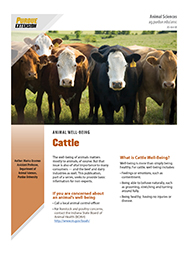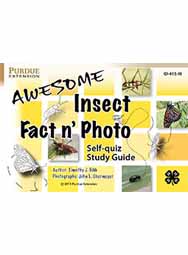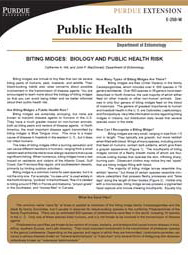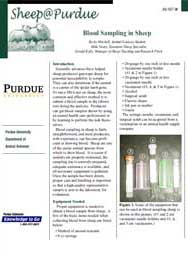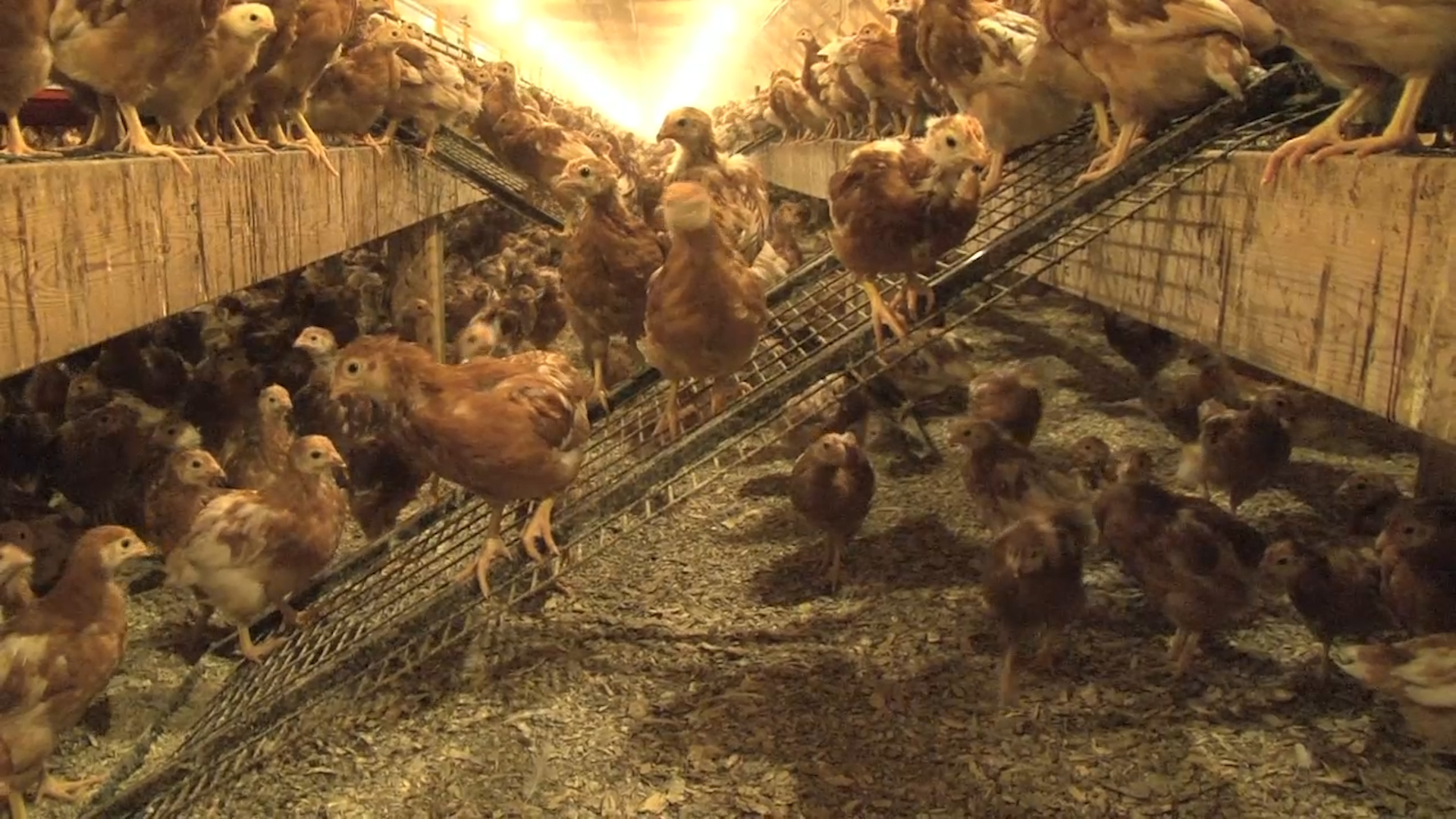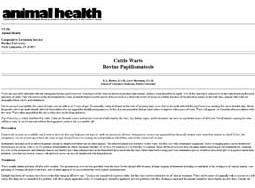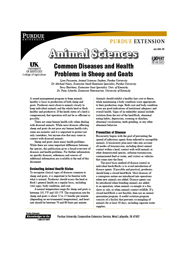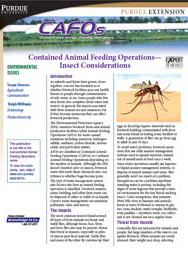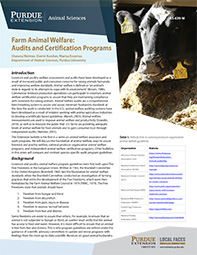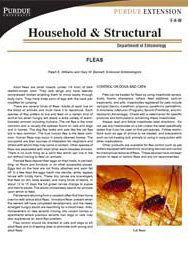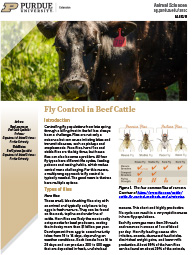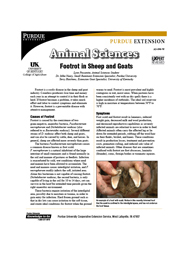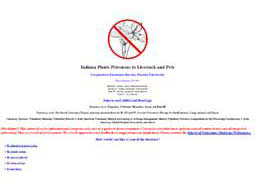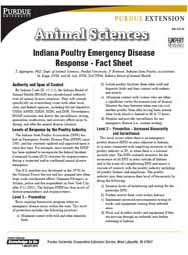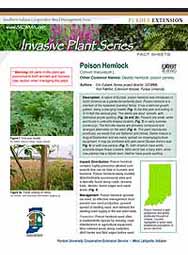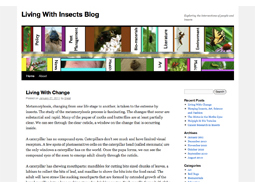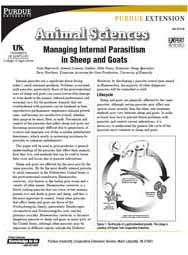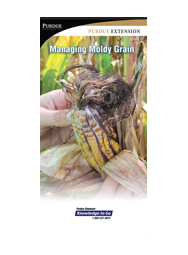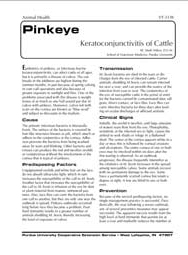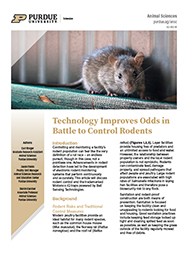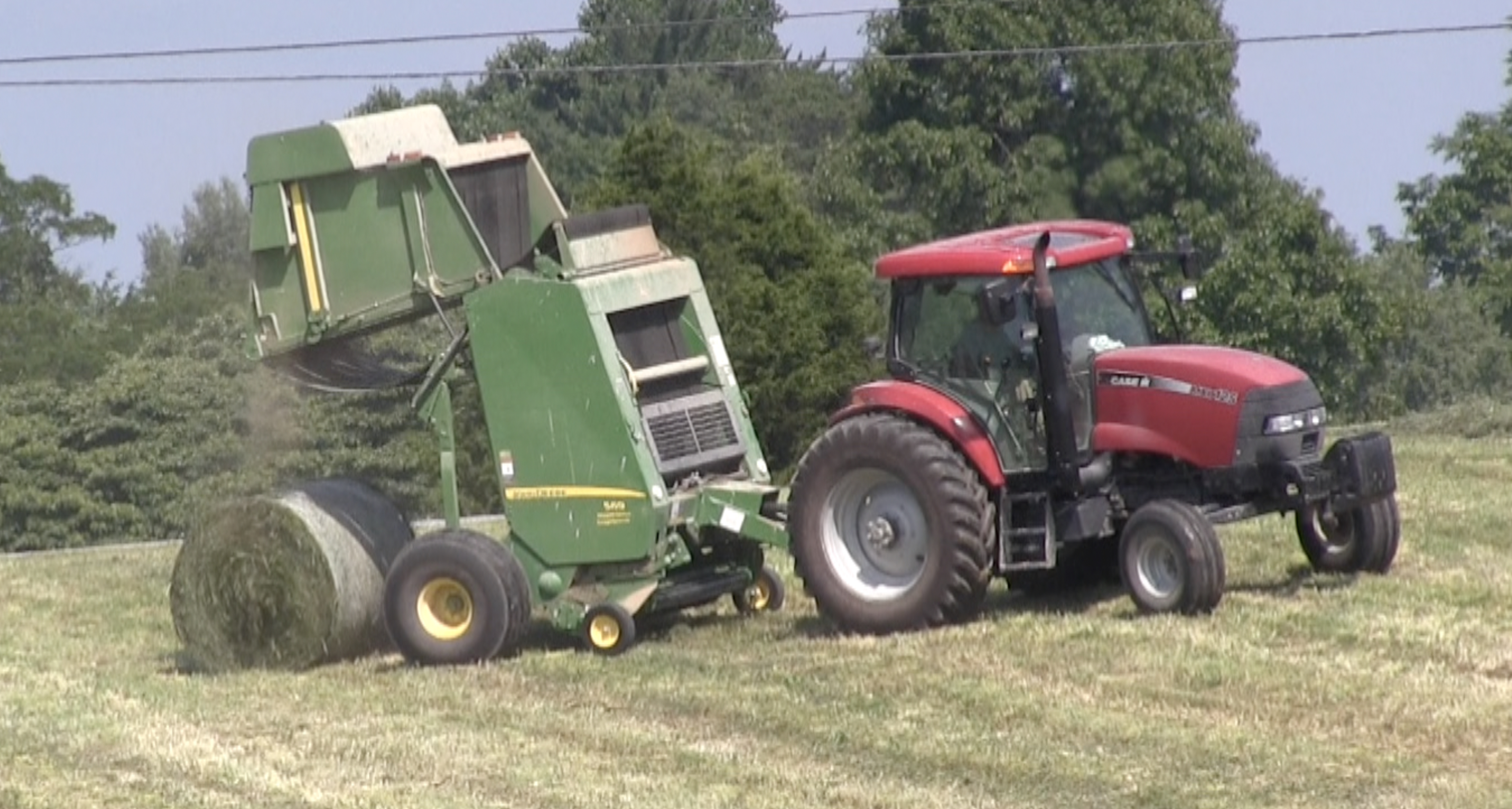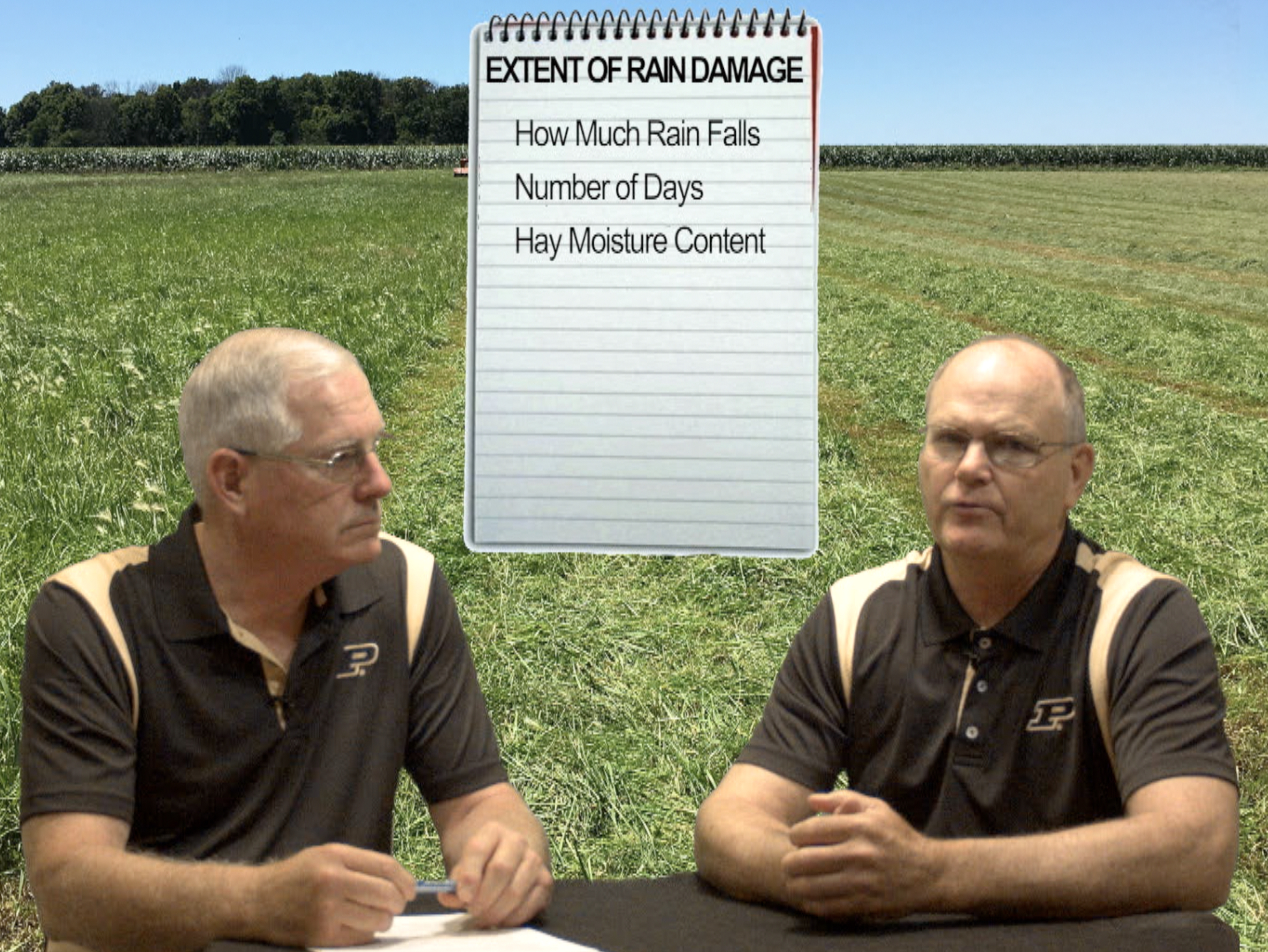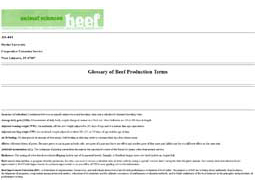Pest Management
Livestock Pests
The well-being of cattle -- beef or dairy -- is an important issue for consumers, the beef and dairy industries, and, of course, to the animals. In this publication, a Purdue University professor discusses well-being...
Awesome Insect Fact n' Photo Self-Quiz Digital Study Guide
This set of digital flash cards, created in a PDF format designed for smart phones and tablets, helps entomology students recognize and identify the most common insects. It contains 150 insect photographs together with t...
Biting Midges: Biology and Public Health Risk
Biting midges are minute to tiny flies that can be severe biting pests of humans, pests, livestock, and wildlife. Their blood-sucking habits also raise concerns about possible involvement in the transmission of disease a...
Scientific advances have helped sheep producers genotype sheep for potential susceptibility to scrapie. This publication discusses the equipment needed, the steps to drawing blood, post collection and handling and care o...
There is much to learn about raising chickens in a cage-free environment to produce eggs. Poultry specialists from Purdue, North Carolina State and Auburn universities have put together a primer of things you need to ...
Cattle Warts--Bovine Papillomatosis
This publication discusses prevention and treatment of cattle warts. ...
Common Diseases and Health Problems in Sheep and Goats
A sound management program to keep animals healthy is basic to production of both sheep and goats. Producers must observe animals closely to keep individual animals and the whole herd or flock healthy and productive. Thi...
Farm Animal Welfare: Audits and Certification Programs
This bulletin is the first in a series on animal welfare assurance and audit programs. Three Purdue University researchers discuss the foundation of animal welfare, ways to assure livestock and poultry welfare, nation...
Flies are more than a nuisance for cattle. Their bites are irritating and can transmit diseases, too. In this publication, Purdue University researchers discuss face, horn, stable and house flies along with methods of co...
Footrot is a costly disease in the sheep and goat industry. Countless producers lose time and money each year in an attempt to control it in their flock or herd. This publication describes the disease's causes and sympto...
Indiana Plants Poisonous to Livestock and Pets
This book introduces animal owners to livestock and pet poisoning caused by plants in Indiana. Forty-nine poisonous plants are discussed. Symptoms and general treatment are noted. Line drawings are given for each plant...
Indiana Poultry Emergency Disease Response - Fact Sheet
This fact sheet contains a list of resources; for example, if you are interested in knowing how to initiate steps to quarantine the infect area and contain the spread of disease, then the contact list says to contact Ind...
Invasive Plant Species Fact Sheets: Poison Hemlock
This threepage fact sheet in the Invasive Plant Series provides information on identifying and controlling this poisonous weed. The publication, produced in partnership with the Southern Indiana Cooperative Weed Manageme...
The author uses this blog in conjunction with a class as a forum for exploring all subjects touching upon insects and arthropods. Comments are encouraged, but moderated, to encourage a thoughtful community. The author, J...
Managing Aspergillus Ear Rot and Aflatoxin
This brochure offers quick tips to help grain producers, livestock producers, and storage and handling personnel minimize the risk posed by aflatoxin. Additional information is available on the Managing Moldy Corn websi...
Managing Internal Parasitism in Sheep and Goats
This paper will be used to give producers a general understanding of the parasites that affect their animals, how they live, and methods that can be used to lower their costs and losses due to parasite infestations....
Molds are a concern because they can reduce grain quality and storability. Under some conditions, certain molds can produce mycotoxins, substances that can be harmful to livestock and humans. This brochure explains basic...
Pinkeye: Keratoconjunctivitis of Cattle
This bulletin provides information about the causes, symptoms and transmission of pinkeye in cattle. It also provides information on prevention and treatments for pinkeye. ...
Technology Improves Odds In Battle To Control Rodents
Advancements in rodent detection have led to electronic rodent monitoring systems that perform continuously and accurately. In this publication, Purdue researchers test trademarked Motomco iQ traps powered by Bell Sensin...
Making excellent quality hay is a process that requires proper use of the right harvest equipment at the right stage of forage growth. Doing this will minimize yield and quality losses so nutritional needs of livesto...
To make excellent quality hay, the forage needs to be cut at the right growth stage and packaged into a bale at the right moisture content without incidence of rain damage. Baling hay too wet can result in mold format...
Treating for Internal Parasites of Cattle
This publication discusses times to worm, types of wormers commonly used, withdrawal time before slaughter, and methods of administration to various classes of cattle. ...









